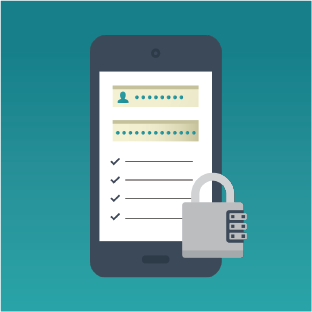You may have received or purchased a new smart device over the Christmas and New Year period. Devices that are able to connect to the internet are often referred to as ‘smart’ devices.
Many people start a fitness program at this time of year and may use wearable devices to track their progress such as fitness trackers, smart watches and heart rate monitors. According to a survey of health and fitness professionals, wearable devices are the number one global fitness trend.[1]

These devices store a variety of personal and health data, often in Apps on smart devices. For example, information about your location, heart rate, body temperature, activity levels and calorie intake and usage.
It is predicted that the global market for wearable devices will exceed US$51 billion by 2022.[2] The growing demand for inexpensive smart devices, has led to little or no security being built into some products. For example, some devices have default passwords that can be found on public websites and can’t be changed.
You can protect the data on your smart health devices with these simple steps:
1. Connect only the devices you need to be online and know what you have connected. To check, turn off your wireless network and see what is no longer working
2. Keep the software up to date for all of your devices, including installing any updates to apps on tablets or phones. You can make this easier by enabling automatic updates, if available to be online and know what you have connected. To check, turn off your wireless network and see what is no longer working
3. Set secure passwords on all your devices, if possible use a combination of 12 or more different characters. Re-set default passwords or change passwords on compromised accounts
4. Configure privacy settings, when offered, to limit the amount of data the device can collect and store. Consider disabling any information sharing capabilities on devices. Check the privacy policies and any requests for data on any apps that you use with wearable devices
5. Purchase devices with security controls such as automatic software updates, the ability to change and set secure passwords, and configurable privacy settings
6. Think about the data collected by the devices you use. For example, sharing the location and time of your daily run on Facebook could represent a physical security risk
7. Use secure networks to connect any smart and wearable devices. Avoid using public Wi-Fi to enter sensitive data into devices. Put a lock on your smart phone and change all default passwords on your home Wi-Fi, router and devices.
Following these easy steps will help to keep the data on your smart health devices secure. You will find more advice on securing mobiles and tablets at Stay Smart Online and guides for securing cameras at the Australian Cyber Security Centre.
If you think your device has been compromised, you can lodge a report with the Australian Cybercrime Online Reporting Network (ACORN).
1 Worldwide Survey of Fitness Trends for 2019. Available from: https://journals.lww.com/acsm-healthfitness/fulltext/2018/11000/WORLDWIDE_SURVEY_OF_FITNESS_TRENDS_FOR_2019.6.aspx
2 Market Research Engine Report 2017. Available from: https://www.marketresearchengine.com/wearable-devices-market